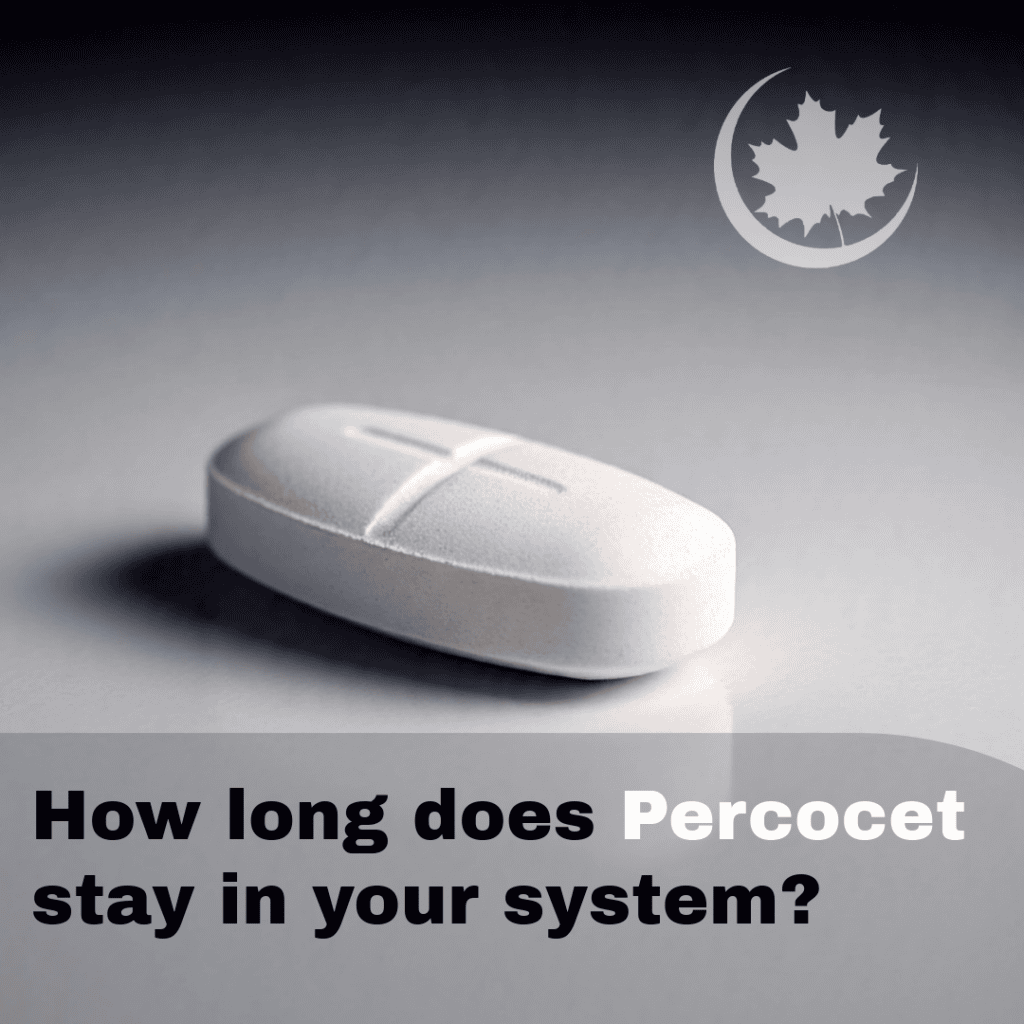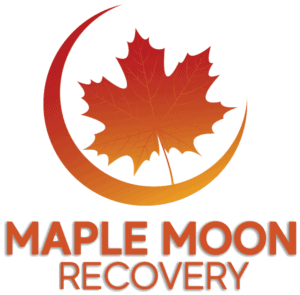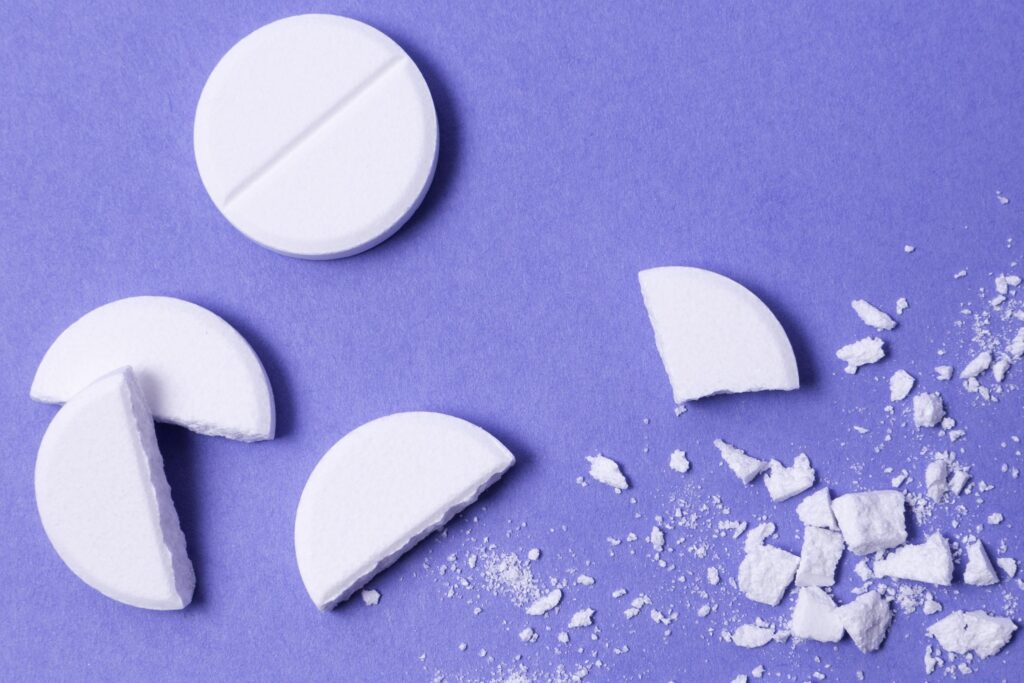How Long Does Percocet Stay in Your System? (2024)

Percocet, a prescription pain reliever, is a drug which contains a combination of both acetaminophen and oxycodone. Prescription medication can be addictive as well as create dependence once taken for a long time. Its sudden discontinuation may result in withdrawal symptoms, which are quite hard to cope with. Let’s explore the symptoms of Percocet withdrawal, its causes, and its timeline.
Percocet, a prescription painkiller, can remain in your system for varying lengths of time depending on several factors such as dosage, metabolism, and frequency of use. Oxycodone, one of its active ingredients, has a half-life of about 3.5 hours, meaning it takes approximately this time for half the drug to leave the bloodstream. However, it can take 20–24 hours for the body to eliminate it entirely. Acetaminophen, the other active ingredient, typically clears from the system within 24 hours. Drug tests can detect oxycodone in urine for 1–4 days, in saliva for up to 48 hours, and in hair for up to 90 days after the last dose.
Quick Stats on Percocet:
- Detection in Urine: 1–4 days
- Detection in Saliva: Up to 48 hours
- Detection in Hair: Up to 90 days
- Half-Life of Oxycodone: ~3.5 hours Clearance Time for Acetaminophen: ~24 hours
Understanding Percocet and How it works
Percocet is a strong painkiller commonly used for the treatment of moderate to severe pain. It is a combination drug containing two active components: oxycodone and acetaminophen. Both these combined ingredients work to alleviate painful symptoms and reduce fever.
Percocet has been widely prescribed by doctors for treating painful conditions. This drug comes in three different forms: tablets, in capsule form, and even in liquid forms. These many forms are for treating all kinds of pain arising from diverse medical conditions. When ingested, oxycodone, being an opioid analgesic, affects how the brain interprets a pain signal. It does so by attaching itself to some brain and spinal cord receptors, where it decreases the feeling of pain. On the other hand, acetaminophen works through inhibiting the production of specific substances that would induce pain and fever in the human body.
What Makes Up Percocet? A Look at Its Ingredients
Two active main ingredients that Percocet contains are oxycodone and acetaminophen. Each ingredient has a different amount depending on the prescribed dosage of each tablet. This makes Percocet a highly effective pain reliever due to the combination of the two ingredients.
Oxycodone is an opioid analgesic used to relieve the symptoms of moderate to severe pain. This is a strong medicine that, with respect to the therapeutic benefits, has many features in common with both morphine and codeine; thus, it tends to bind with special receptors within the brain and spinal cord, dampening the perception of pain.
Acetaminophen, also known as paracetamol, is a common over-the-counter pain reliever often used to treat mild to moderate pain and reduce fever.
Medical Applications of Percocet: Common Uses
Physicians prescribe it for various conditions that cause pain, from moderate to extreme. It works well on all kinds of pains: one-sided, shooting, sharp, aching, dull, and throbbing pains caused by injuries, surgeries, and chronic pains. Cancer patients on treatment or in palliative care use Percocet to control their pain. It is also prescribed to people suffering from acute orthopedic problems, dental procedures, or surgery, and trauma.
However, it should be considered that one should not take Percocet except when it is prescribed by a physician. If taken otherwise for recreational purposes, the person is sure to get addicted and develop dependence, inviting other serious health complications.
The Risk of Addiction and Dependency with Percocet
As is the case with all the opioid medications, Percocet has a great addiction liability; besides, it is also severely abused when used beyond prescription, in large doses, and for a long duration of time. Over some period, the body may well rely on medication. The withholding of medication may also manifest symptoms of withdrawal.
It is generally important to take Percocet only as directed by the doctor and according to the recommended dosage. Talk to your doctor or pharmacist in case of any side effects associated with the medication or concerning questions.
Navigating Percocet Withdrawal
The process of withdrawal from Percocet entails a set of symptoms. These can be both physical and psychological, depending on the sudden stoppage or reduction in dosage. The severity may range from mild to severe and would depend on the individual’s body composition, dosage, and length of time used.
It is hard to go through the withdrawal process; withdrawal can be uncomfortable. Such steps are necessary to further one’s recovery from addictions. It will certainly be easier with professional help and support from close friends and family.
Stages of Percocet Withdrawal Symptoms
The timeline for withdrawal symptoms can vary from individual to individual and can start within a few hours or up to several days after discontinuation or dose reduction. Initial symptoms include anxiety, agitation, and restlessness and are commonly referred to as “stage one” symptoms.
It is necessary to emphasize that the degree and duration of withdrawal symptoms will vary depending on individual circumstances.
Symptoms of stage two can appear anywhere between one to three days following the discontinuation of the drug. The severity and nature of the symptoms may vary; they can include excessive perspiration, nausea, vomiting, muscle pains, and diarrhea. These symptoms are usually the most difficult to manage, and if the symptoms worsen, it is necessary to consult a doctor.
Symptoms in stage three are mostly severe and may begin anywhere between three to ten days after one has stopped using Percocet. Symptoms may include severe cravings, insomnia, depression, and anxiety. These symptoms can get quite difficult to handle; therefore, it is important to seek professional help and also ask for the support of loved ones during this period.
Key Factors That Impact Percocet Withdrawal Severity
Many factors determine the intensity and duration of the withdrawal symptoms. These include dosage, chronicity of use, age, gender, body weight, and status of mental health.
Individuals who have been taking high doses of Percocet or using it for a longer period are more likely to experience severe withdrawal symptoms. Individuals with underlying mental health conditions may also experience more intense psychological symptoms during the withdrawal process.
Professional help, along with the support of loved ones, is important in the withdrawal process. The health professional can guide one on the symptoms and ways to plan for long-term recovery.
Physical Symptoms During Percocet Withdrawal
Percocet is a strong painkiller that contains oxycodone and acetaminophen. It is used for the treatment of moderate to severe pain. It is very addictive and can result in physical dependence. When one stops taking Percocet, withdrawal symptoms may set in. These symptoms can be quite uncomfortable and may persist for weeks.
Flu-like Symptoms During Withdrawal
Flu-like symptoms, such as sweating, chills, fever, and body aches, are common during Percocet withdrawal. An individual may also feel weak and fatigued during this period. These symptoms are not easy to manage and may make it hard for the individual to function normally. It is important to stay hydrated and rest as much as possible during this time.
Gastrointestinal Challenges During Detox
Gastrointestinal withdrawal symptoms following Percocet may involve diarrhea, nausea, vomiting, and anorexia. Sometimes they are profound and result in dehydration or malnutrition; therefore, fluid replacement must be kept up to date and normal nutrition composed of small meals be taken as frequently as possible. Such symptoms are amenable to medications that are over-the-counter or over-the-counter medication of similar function.
Sleep Issues in Withdrawal: What to Expect
Sleep disturbances are also shared in the withdrawal course from Percocet. Most people may present with symptoms of insomnia, nightmares, or hypersomnia. Obviously, such sleep disturbances do contribute to fatigue, irritability, and mood swings. Developing a normal sleep pattern and enforcing good sleep hygiene is important during this period. This may include no caffeine and electronics before bedtime, and a sleep-conducive environment.
Managing Muscle Pain and Discomfort
Severe muscle aches and pains are associated with withdrawal from Percocet, which may affect the muscular, joints, or limb areas and may persist for weeks. Restlessness and seizures may also be encountered during this period. Laying off from being too strenuous and performing stretching exercises would help alleviate these symptoms of withdrawal. Over-the-counter pain relievers may assist in managing these symptoms.
Overall, Percocet withdrawal can be a long and uncomfortable process. General support from a healthcare provider or addiction specialist is important during this time. They are able to advise on how to manage the symptoms and develop a plan for long-term recovery.
Mental Health Challenges During Withdrawal
Anxiety and Depression as Psychological Symptoms
Anxiety and depression might be witnessed during the course of Percocet withdrawal in individuals. These can even reach very serious states with the consequence of suicidal thoughts and self-aggression. Thus, such histories of individuals need close attention while going through the course of detoxification.
Mood Swings and Irritability During Detox
Percocet withdrawal can result in irritability and mood swings. The mood may change within seconds, leading to an emotional breakdown; individuals become aggressive, which is very difficult for the people close to them to handle.
Understanding Cravings and Avoiding Relapse Intense cravings for Percocet during withdrawal may lead to obsessive thoughts about using the medication. This may be brought on by a specific trigger, like stress or some sort of environmental cue, which can entice a person to relapse.
Different Types of Opioids
Opioids come in a variety of forms, each differing in strength, duration, and medical use. They are classified into natural, semi-synthetic, and synthetic categories:
- Natural opioids (opiates): Derived directly from the opium poppy plant, examples include:
- Morphine
- Codeine
- Semi-synthetic opioids: Chemically modified from natural opiates. Common examples include:
- Synthetic opioids: Entirely man-made but act on the same brain receptors. Examples include:
- Fentanyl (extremely potent, used in medical and illicit settings)
- Methadone (used for pain and opioid use disorder treatment)
- Tramadol (considered less potent but still addictive)
Each of these substances has a high potential for dependence and overdose, particularly when used outside of prescribed guidance or mixed with other depressants like alcohol or benzodiazepines.
Maple Moon Recovery: Your Partner in Overcoming Addiction
Maple Moon Recovery: Your Partner in Overcoming Addiction
At Maple Moon Recovery we understand the challenges individuals face when battling addiction, particularly to prescription medications like Percocet. Our mission is to provide a supportive, personalized, and effective pathway to recovery in a safe and serene environment.
Comprehensive Services for Percocet Recovery
- Medical Detox
Maple Moon Recovery offers medically supervised detoxification to help individuals safely navigate withdrawal symptoms. Our expert medical staff ensures your comfort and safety throughout the process. - Inpatient Residential Treatment
We provide a structured and nurturing environment where clients can focus entirely on their recovery. Our residential programs are tailored to address the unique needs of everyone.
Therapeutic Support
- Individual Therapy: Identify and address the root causes of addiction with our experienced counselors.
- Group Therapy: Build a supportive community by sharing experiences and learning from others in recovery.
- Holistic Therapies: Engage in yoga, meditation, art therapy, and other holistic practices that promote overall well-being.
Why Choose Maple Moon Recovery?
- Luxury Accommodations: Relax and heal in a comfortable, private, and peaceful setting designed to enhance recovery.
- Experienced Professionals: Our dedicated team of doctors, therapists, and support staff are experts in addiction treatment.
- Personalized Care: We believe in treating the whole person, not just the symptoms, by offering individualized treatment plans.
If you or someone you know is struggling with Percocet dependency, let Maple Moon Recovery guide you toward a healthier and more fulfilling life. With our evidence-based treatment methods and compassionate care, recovery is within reach.
Sources:
🔗U.S. Food and Drug Administration (FDA) – Risks of Sudden Discontinuation of Opioid Pain Medicines
🔗Centers for Disease Control and Prevention (CDC) – Understanding the Opioid Overdose Epidemic
🔗National Institute on Drug Abuse (NIDA) – Opioids
🔗Substance Abuse and Mental Health Services Administration (SAMHSA) – TIP 63: Medications for Opioid Use Disorder
🔗U.S. Department of Health and Human Services (HHS) – National Opioids Crisis: Help and Resources
🩺 Professionally Reviewed by:

Share This Post



